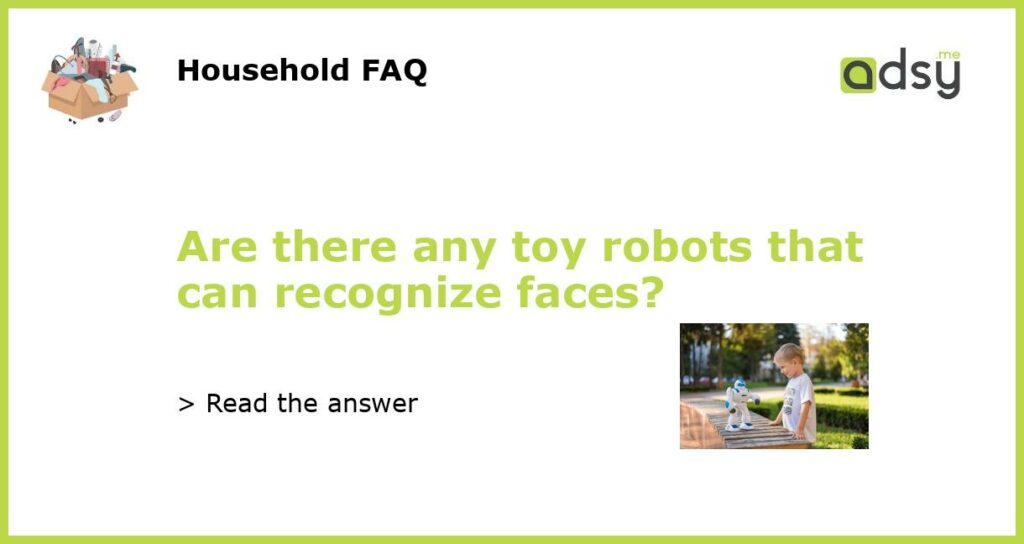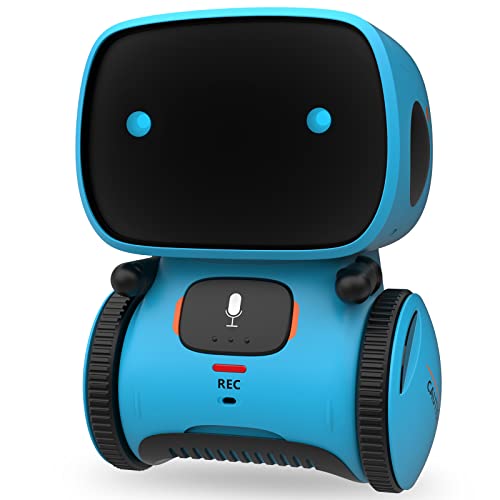Yes, there are toy robots that can recognize faces
In today’s technological age, advancements in artificial intelligence have opened up a world of possibilities when it comes to robotics. One of the fascinating developments in this field is the creation of toy robots that have the ability to recognize faces.
The importance of facial recognition in toy robots
Facial recognition technology has become increasingly popular in many fields, including security, marketing, and social media. By accurately identifying and differentiating individual faces, this technology allows for a personalized and tailored experience. When applied to toy robots, facial recognition can enhance the interactivity and engagement between the robot and its users.
Children are naturally drawn to toys that can mimic human expressions and recognize their presence. By incorporating facial recognition technology, toy robots can respond to specific individuals by addressing them by name, remembering their preferences, and adapting their behavior accordingly. This level of personalization adds a new level of immersion and realism to the toy robot experience.
Toy robot brands that use facial recognition technology
Several toy robot brands have embraced facial recognition technology, bringing it to life in their products. One such brand is Anki, known for its innovative and interactive robotic toys. Anki’s Cozmo and Vector robots utilize computer vision technology, including facial recognition, to identify and remember individual users. These robots can learn to recognize and remember multiple faces, allowing for a customized experience for each user.
Another brand that has incorporated facial recognition into their toy robots is WowWee. WowWee’s MiP robot is equipped with a camera and software that enable it to recognize and track human faces. This feature allows the robot to follow and interact with specific individuals, making it a popular choice among children.
How do toy robots recognize faces?
Toy robots that can recognize faces typically rely on a combination of hardware and software to achieve this capability. These robots are usually equipped with a camera that captures an image of the user’s face. The image is then processed using facial recognition algorithms to detect and analyze the unique features of the face.
The facial recognition software compares the captured image with a database of known faces to determine the identity of the individual. Once the face has been recognized, the robot can respond accordingly based on pre-programmed behaviors or personalized settings.
Limitations and future possibilities
While toy robots that can recognize faces have made significant strides in recent years, there are still some limitations to be aware of. Facial recognition technology can sometimes be sensitive to changes in lighting conditions or facial expressions, which can affect the accuracy of the recognition process. Additionally, toy robots with facial recognition capabilities may require regular updates to their software to ensure optimal performance.
However, as technology continues to evolve, it is likely that toy robots with facial recognition capabilities will become even more sophisticated and accurate. Future advancements may include improved algorithms, enhanced hardware components, and expanded databases of known faces.
In conclusion, toy robots that can recognize faces are indeed a reality. These robots offer an interactive and personalized experience for children, allowing for a greater level of engagement and immersion. With ongoing advancements in artificial intelligence and facial recognition technology, we can expect toy robots to become even more capable in the future.






